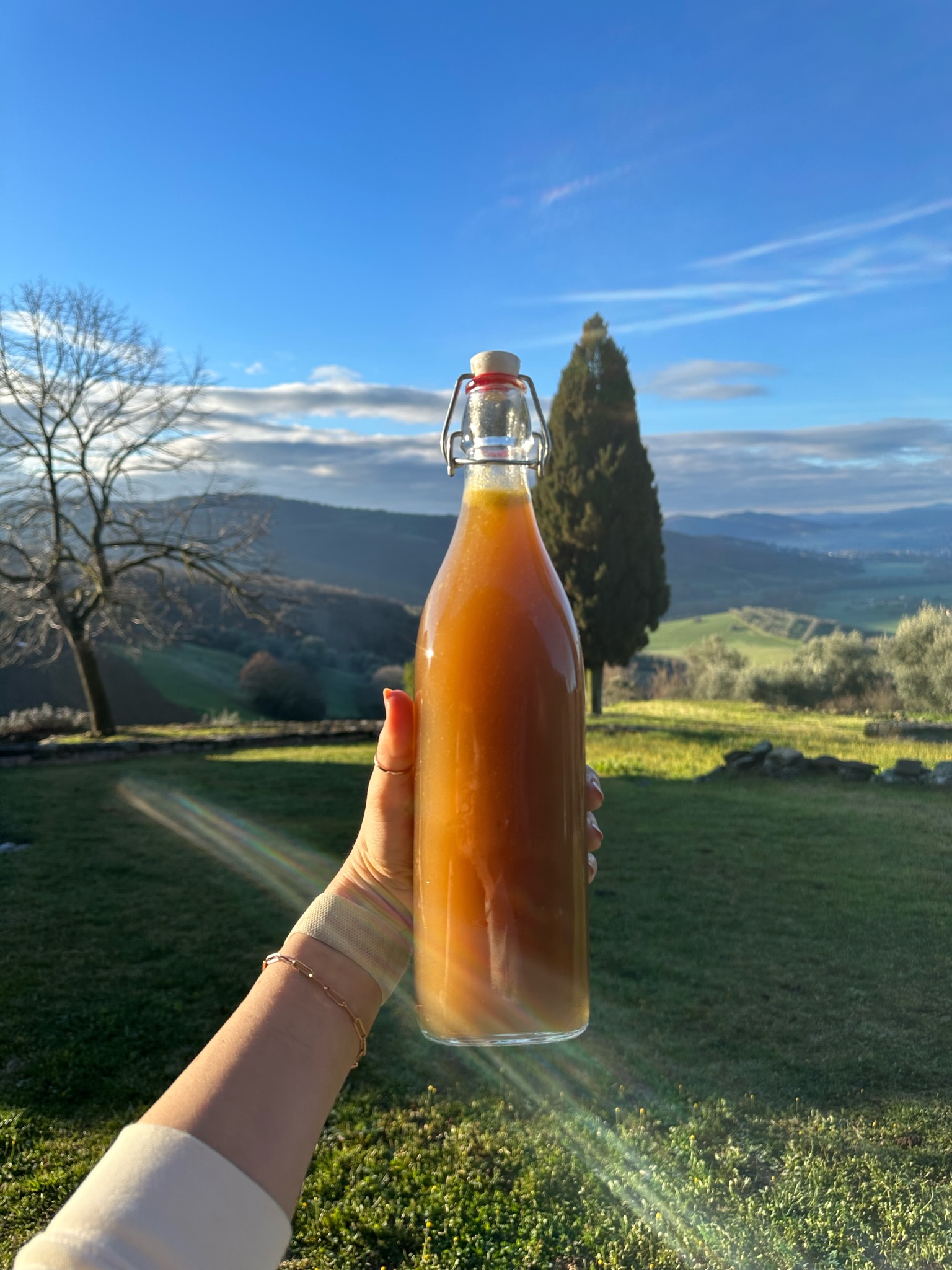
Gut-Healing Benefits of Daily Bone Broth Consumption: A Sustainable Kitchen Approach
Today, I’m excited to share with you one of my favorite daily rituals for nurturing my gut health—drinking bone broth. This nourishing elixir has been a game-changer for me, providing a wide range of benefits while also promoting sustainability in the kitchen. In this blog post, we’ll explore the incredible advantages of incorporating bone broth into your daily routine, from supporting gut health to making a positive impact on the environment.
Why Bone Broth?
Bone broth has been a staple in traditional cuisines for centuries, known for its rich nutrient profile and potential healing properties. Made by simmering animal bones, connective tissues, and aromatic vegetables, bone broth is a concentrated source of essential amino acids, collagen, gelatin, minerals, and other beneficial compounds. It’s simple to make and easy to add into your routine. I drink mine in the morning, after my Greens and Minerals and Zeolite and before my morning matcha. Let’s dive into how this liquid gold can transform your gut health.
Gut Health Benefits:
Gut-Loving Collagen: One of the key components of bone broth is collagen, a protein that helps repair and maintain the integrity of the gut lining. By consuming bone broth regularly, you provide your gut with the building blocks it needs to promote a healthy digestive system.
Aiding Digestion: Bone broth contains gelatin, which supports the digestive process by breaking down food and enhancing nutrient absorption. It can be particularly beneficial for individuals with sensitive stomachs or those recovering from digestive issues.
Soothing Inflammation: The amino acids found in bone broth, such as glutamine and glycine, possess anti-inflammatory properties that can help calm an irritated gut. By reducing inflammation, bone broth may alleviate symptoms associated with conditions like leaky gut syndrome.
Supporting Beneficial Gut Bacteria: The gelatin and other compounds in bone broth act as prebiotics, providing nourishment for the growth of beneficial gut bacteria. A healthy balance of gut flora is essential for optimal digestion, nutrient absorption, and overall well-being.
Sustainability in the Kitchen:
Beyond its numerous health benefits, bone broth is a sustainable addition to your culinary repertoire. Here’s how it promotes eco-friendly practices in the kitchen:
Reducing Food Waste: Bone broth offers an excellent opportunity to utilize animal bones and connective tissues that are often discarded. By transforming these “waste” ingredients into a nourishing elixir, you contribute to reducing food waste and making the most of your ingredients.
Ethical Meat Consumption: When sourcing bones for your bone broth, opt for sustainably raised, organic, or grass-fed animal products. Supporting ethical farming practices ensures that you are consuming high-quality ingredients while promoting animal welfare and a healthier planet.
Homemade Convenience: Making your own bone broth not only allows you to control the quality of ingredients but also reduces reliance on store-bought packaged alternatives. By preparing bone broth at home, you minimize packaging waste and the environmental footprint associated with mass production.
I make my own weekly just using kitchen scraps and have included the general recipe I follow below. Store bought options also work (but are not as potent), but make sure to read the ingredients as many brands have snuck in unnecessary fillers, sugars and other weird ingredients.
Chicken Bone broth recipe:
1 whole chicken carcass
2-3 cups vegetable scraps (I used celery, carrot, zucchini, broccoli, etc but use what you have in the kitchen)
1 onion, quartered
5-10 whole garlic cloves
Herbs of choice
Salt and pepper
1- 1.5 gallons water
Instructions
Add chicken carcass, veggies scraps, onion and garlic to a very large stock pot. Add whichever herbs you’ve chosen and sprinkle with salt and pepper. Cover with water and bring to a light boil. Once boiling, reduce heat and allow it to simmer.
Simmer for at least 6 hours but ideally more. I like to go all day as the longer you can let it simmer, the better the nutrient-density.
Turn off the heat and allow it to cool. Strain and store to drink, make soups or freeze for later.
Beef bone Recipe:
– 4-5 beef bones
– 1 zucchini, cut into big pieces.
– 2 onions quartered
– 2 carrots, chopped
– 1 bundle of celery, roughly chopped
– 4 in ginger
– 5-6 garlic cloves
– Handful of basil
– Handful of rosemary
– Handful of sage
– 6 whole cloves
– 1 tablespoon whole peppercorns
– Salt
Instructions
First put the bones in the pot and cover with water. Simmer for 20 min and drain the water. Then add all other ingredients into the pot and cover again with water at least 4 in above and bring to a simmer. Let simmer on low, slightly covered for at least 12 hours. (I like to start my broth in the morning and then turn it off before bed and let it sit overnight) Make sure to watch your pot and fill up the water as needed so it doesn’t get too low. Once it’s cooled, strain and store in the fridge for a week or in the freeze for 4 months.
You can also put chicken and beef together for an even more flavorful broth! Use what you have – after all, this is a great way to be sustainable in your kitchen!

